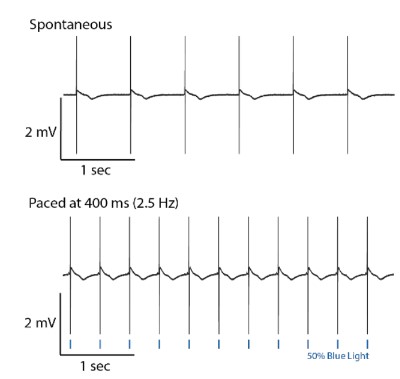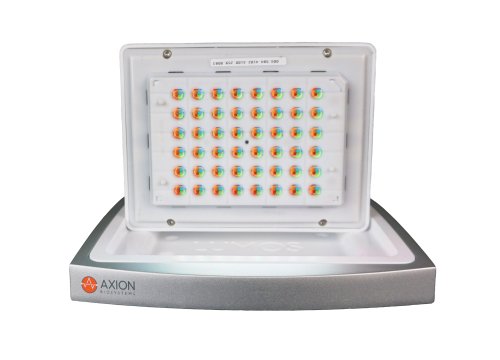Optical stimulation system for multiwell plates
Incorporate cutting-edge optical techniques into your in vitro research using Axion BioSystems’ Lumos. Previous in vitro optical stimulation devices provided low throughputs or limited control of light delivery, hindering the adoption of optogenetic techniques in research and development.
Lumos is the first commercial multiwell optical stimulation system to offer precise control over intensity and duration to four stimulation wavelengths in each well. Designed to pair with the Maestro Pro™ and Edge™ recording platforms, the Lumos allows researchers to simultaneously direct and record functional network activity.
The Lumos advantage
High-throughput
Control light delivery to each well of a standard 24- or 48-well microplate
Fully configurable
Control intensity from each of 94 (24-well) or 192 (48-well) LEDs (four wavelengths per well) with microsecond precision
Optimized light delivery
Market-leading light intensities are evenly distributed across each well
User friendly software
Design optical stimulation patterns quickly with intuitive “drag-and-drop” style building blocks
Environmental control compatible
Regulate temperature, CO2 and humidity for extended benchtop work
Pairs with Axion’s Maestro Pro and Edge MEA systems
Optically control cell activity during real-time recordings of functional responses
>> Axis Navigation - Stimulation Studio
Fast, flexible set-up
AxIS Navigator provides intuitive, visual stimulation programming in an easily accessible plate map format. Here, each of the LEDs can be independently controlled for both intensity (1-100% max power) and duration (down to 100 microseconds). Additionally, stimulation across the plate can be set up for predefined time courses or regulated via an operator start-stop interface in the software.
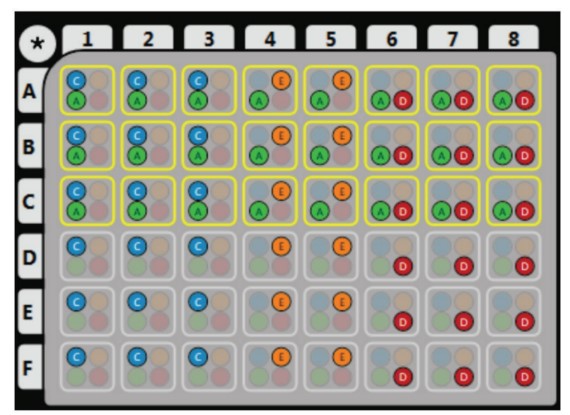
>> Award-winning innovation
Axion’s pioneering Lumos system
“The platform . . . now puts unique control in the hands of the researcher. Using high-power LEDs that span several wavelengths increases the customization ability to go with specific light-manipulated protein manipulation.”
“This system for high-throughput optical stimulation in multiwell plates is the first large-scale practical implementation in the emerging field of biophotonics.”
- The Scientist Top 10 Innovations 2016 judges’ comments
>> Lumos optical stimulation system
The Lumos system can be used in two general ways
Control of cell biology – Deliver light to Axion’s Lumos OptiClear plates (24- and 48-well formats), standard-format SLAS-compatible microplates with optical specializations and clear bottom.
Control of cell activity – Pair Lumos with Axion’s Maestro microelectrode array (MEA) platform and deliver light to Axion’s Lumos MEA plates for measurement of network activity.
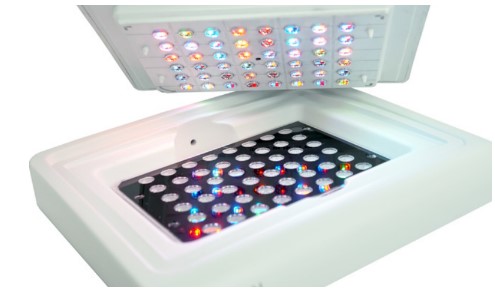
>> Use Lumos to control cell biology
Control of cellular biology on a high-throughput scale
Light-mediated control of biochemical, genetic, and cellular functions is an emerging tool in many research fields:
Control intracellular signaling pathways – e.g., Kennedy et al. 2010
Direct gene expression with light – e.g., Konermann et al. 2013
Edit genes with light-induced CRISPR/Cas9 – e.g., Polstein & Gersbach 2015
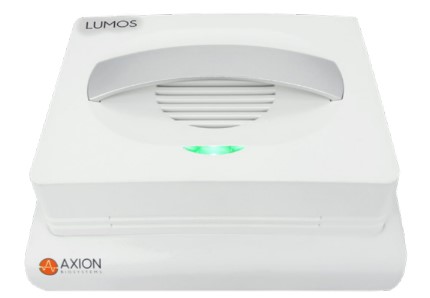
>> Environmental control
Perform extended light delivery experiments on the bench
Temperature – Compatible with standard lab warming plates
CO2 – Gas delivery port enables a controlled CO2 environment
Humidity – Lumos plate humidity reservoirs reduce evaporation from wells
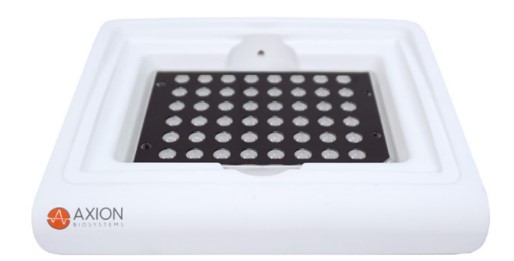
>> Lumos OptiClear Plate
Optimal light delivery and imaging
Lumos OptiClear 24 (OPT-24) and 48 (OPT-48) are Axion’s first microplates without electrodes. These plates have a high clarity bottom culture surface for microscopy and high content imaging. The specially formulated reflective white walls and lensed lid facilitate optimal light delivery within each well.
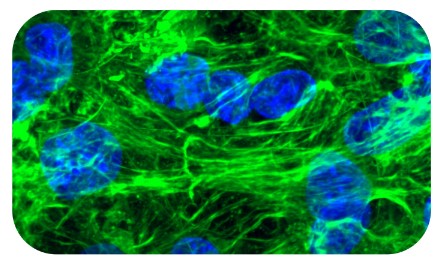
>> Maestro Pro and Edge MEA systems
Decode life’s circuitry with MEA
The Maestro systems are the industry’s first high-throughput microelectrode array (MEA) systems. Record networks of electrically active cells (e.g., neurons, cardiomyocytes, and muscle cells) in a multiwell plate in real time. Over minutes or months, gain unprecedented access to electrical network function from cultured cell populations. Perfect for characterizing newly created iPS cells, researching the behavior of diseased cells, screening for drugs to treat that disease, or examining potential toxic effects of drug candidates, the Pro and Edge systems deliver an easy-to-use, compact cellular analysis system suitable for any lab.
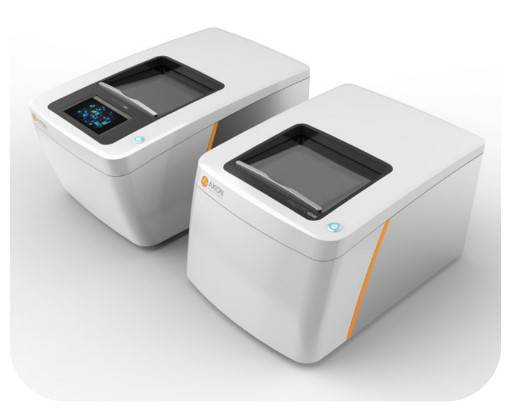
>> Lumos MEA Plate
Designed for optogenetic MEA studies
Lumos MEA 24 (M384-tMEA-24OPT) and 48 plates (M768-tMEA-48OPT) for the Maestro Pro and Edge MEA platforms combine unparalleled access to cellular electrical network information (16 recording electrodes per well) with a thin, transparent plate bottom for culture visualization and assay multiplexing. The specially formulated reflective white walls and lensed lid facilitate optimal light delivery within each well.
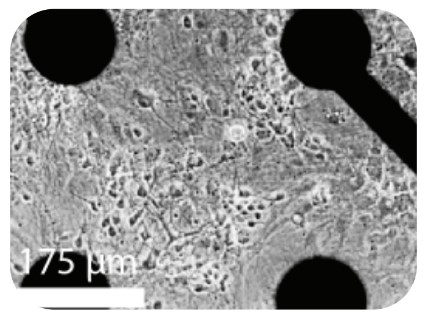
>> Use Lumos to control cell activity
Control cell activity with light
Optogenetics techniques use genetic targeting to express light-sensitive ion channels called opsins (e.g., ChR2) in targeted cell populations. Upon stimulation by a specific wavelength of light, these opsins can be activated to shift the cell membrane potential. Light of specific wavelengths can thus be used to activate or silence cell activity in targeted cell populations.
Advantages of optogenetic-mediated control of cell activity include:
Artifact-free stimulation – Light-evoked electroactivity is artifact-free
Precise control of cell activity – Study a range of physiologically relevant states in each well
Reduced experimental variability – Standardize cell activity to reduce variability in well-to-well and batch-to-batch activity
Cell specific control – Enhanced neural disease modeling is possible with cell type specific control in mixed cell cultures
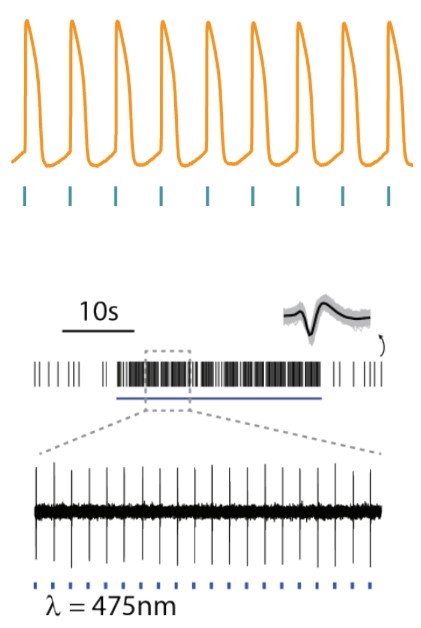
>> Revolutionizing optical stimulation
The most flexible in vitro optical stimulation system
A first-of-its-kind on the market, Lumos revolutionizes in vitro optical approaches. Lumos provides 24 or 48 concurrent wells of stimulation and the ability to simultaneously use up to four different wavelengths of light per well at user-specified, precisely defined output patterns.
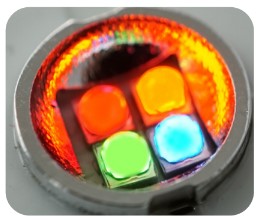

>> Improve the quality and consistency of your assay
Addition of excitatory light-sensitive opsins, such as channelrhodopsin (ChR2), allows for controlled pacing of cardiomyocyte beating or neural network bursting. For cardiomyocytes, pacing the beat rate allows the user to increase physiological relevance, reduce well-to-well variability, and explore use-dependent drug effects.
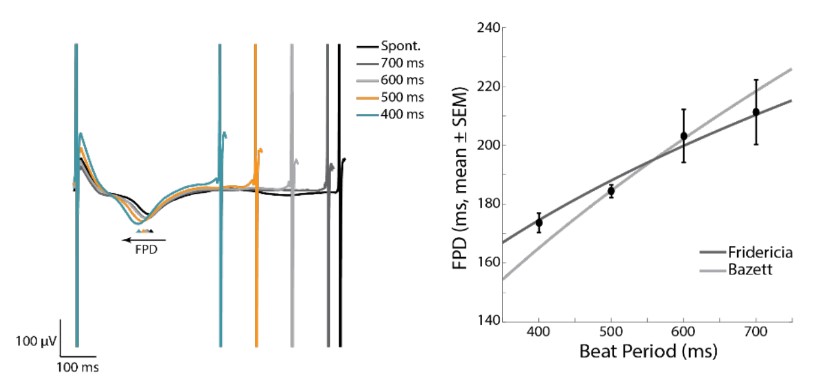
>> Discover more from your assay by controlling activity
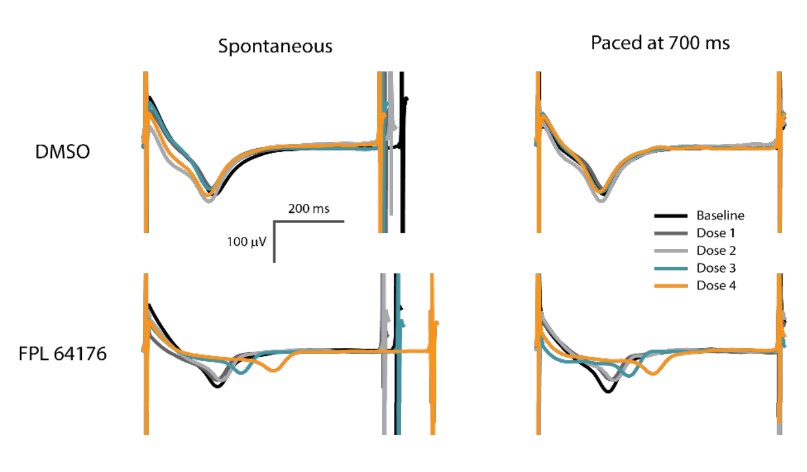
(Left) Application of FPL 64176 induced a significant prolongation of BP and FPD relative to the vehicle control (DMSO). (Right) Pacing at 700 ms BP controls for the influence of beating rate on repolarization.
Under paced conditions, FPL-64176 produced a dose-dependent prolongation of FPD that was independent of beat period.
Our commitment to our customers
With over 15 years of experience bringing innovative new products to our customers, we strive to accelerate your research by making live, functional biology more accessible. Our design philosophy is to ensure all of our products are:
Flexible
Hardware designed for broad, integrated functionality in one instrument
Easy to use
Intuitive instruments, consumables, and software for fast, easy adoption
Smart technology
Easy to run with no complicated steps, saves time and money.
